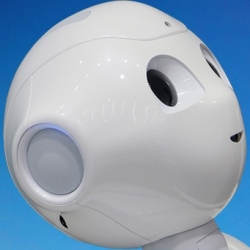
Dominant AI trends that will start in 2019: Nextbigfuture interviewed Dr. John Smith, Head of AI Tech, IBM Research to discuss what IBM has been able to do in AI Research this year and the three predicted dominant AI trends that will start in 2019.
Faster and Better Deep Learning
IBM has been able to continue to improve the performance and metrics related to deep learning. They are able to speed up the times needed for make an inference by 30% and in some cases, they perform neural searches 50,000X faster.
They have been able to train deep learning with 16-bit and even 8bit precision without losing accuracy. Using 8-bit precision instead of 16-bit means a system can be twice as fast.
Deep learning has usually required a billion examples to train to optimal levels. Research has lowered this amount of training data down to millions of thousands of examples to reach good levels of performance. IBM has had success with one picture learning.
Better Listening and Debating
IBMs Debater system has been an advance from the previous Jeopardy game playing AI. Debater has a deeper and richer level of engagement. Previously the Watson system for Jeopardy had to understand a question and then rapidly search for an answer on the internet. This had to be done with greater speed and accuracy than the best human players like Ken Jennings.
The Debate system has to be able generate both pro and con positions to a debate question and create justification, arguments and reasons and construct convincing cases.
This resulted in a better Machine Listening Comprehension capability for argumentative content. Machines can understand when people are making arguments and they can follow the argument.
This goes towards the DARPA goal of having AI that can explain itself to humans.
A Debating system does not have to be an opponent. A doctor trying to make a diagnosis could engage an AI in a discussion of the possible causes. This would be a way to explore with explanations the AI insights and understanding.
Other experts like lawyers, architects and engineers would find enlightened discussion around all aspects of a complex and important decision to be useful.
From Narrow AI to Broad AI to AGI
Dr John Smith, Head of IBM Research, sees AI progressing from Narrow AI to Broad AI to AGI (Artificial General Intelligence). This is pursuing advancing in three main ways
1. More fairness and accuracy
2. Providing explanations which can build trust in the answers
3. Robustness. This means not having right answers or completely wrong answers. Completely wrong answers is where the system does not get the answer and does not get the context. Building better models will allow systems to not provide an answer of ice cream when talking about naval engineering.
IBM See Three AI Trends
1. IBM believes AI will move from identifying correlations to causation.
I believe this means that they are able to increase the statistical certainty of the relationships but also generate virtual confirmation tests.
They would need to split the data into learning data sets and testing of causation data sets.
2. They will improve the trustability of AI. This means solving the explanation problems.
3. They see a growing role and importance for quantum computers with AI.
This was already started with D-Wave and other years ago. However, the power of quantum computers is growing by leaps and bounds.
